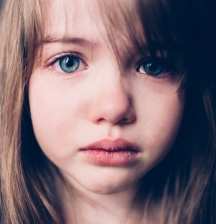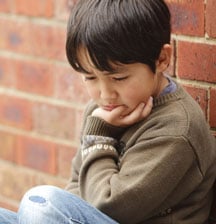
Bullying is an emotive subject, but is the term bandied around a little too freely these days? Learn how to bullyproof your kids and recognise when playground teasing turns into bullying.
‘Children learn to care by experiencing good care.’ James L.Hymes, Jr.
You’ve got to love 5-year-olds. I have had little ones come up to me and say in their most beguiling voice, along with the puppy-dog eyes, “He’s bullying me!” Invariably, once I get to the bottom of the situation, it comes out that there has been a misunderstanding which has been blown out of proportion, with a little bit of meanness from both sides thrown into the mix. This is not to say that true bullying is not extremely traumatic for the victim(s), however the term ‘bully’ can be bandied about a little too freely at times, and in the case of ‘the boy who cried wolf’, we need to be clear about what bullying really is, so that when a true situation arrives with the need for prompt action, we can have confidence in the authenticity of the situation. If our children reserve the term for its correct context, then it will hold the appropriate weight for action.
So, what can we teach our children with regards to bullying and negative behaviour directed towards themselves or their friends?
Probably the number one advice for parents would be to encourage your child to have a great sense of humour and a good nature. If they are used to being teased in a positive family context and can laugh at themselves, they will have a huge advantage over super-sensitive kids who take everything personally. Bullies choose their targets carefully, but they tend to be disinterested in kids who they know will not be too mortified if someone makesfun of them.
You can practise ‘quick retorts’ with your child even if they have never experienced problems, so that if someone does bother them they are able to think quickly and be confident. For instance, if they are told, “You’re fat!” they can respond “And I didn’t think you’d noticed me! Wow!” or a younger child could say, “Do you need glasses?” If a child keeps repeating the insult, a comment like, “You said that yesterday! It’s getting boring!” or “Can’t you come up with something new?” is a good response. Note: When working on these quick retorts, emphasise with your child that they are never to be unkind or derogatory with their retorts, as this only worsens the situation and can lead your child to believe that meanness deserves nastiness in return. Tell them that you want them to be the bigger person and not stoop to name-calling or humiliation.
Also, encourage them to be confident around that person even if they don’t feel it – shoulders back, eye contact and a confident stride when walking past gives the perception that ‘I’m okay even if you are not treating me well.’ If your child has a wide group of friends they will have more support. The bully will not be able to act easily if your child is well thought of and has a large social network.
We do need to remember that the development of our children’s moral code still lies firmly at the feet of us as parents. If children are not encouraged to feel concern and empathy for others, then they are at risk of being involved in bullying, either directly or indirectly. Being a bystander is just as big an issue as being a bully, because bullies would have no power without them.
If an incident occurs
If your child tells you of an incident, some good questions to ask are:
- Has this type of thing happened before?
- Tell me all the facts and then we will talk about feelings. (The factual retelling of an event is important because if appropriate, it will need to be repeated to a person in authority for follow-up.)
- What was the worst thing about this experience for you?
If the incident is reasonably minor, just being listened to will satisfy most children. However, if there is real and ongoing physical or emotional pain, you will need to either:
- In a school context, approach their class teacher first and form a plan of action. Make sure that your child knows you have a strategy for going forward, for example, going straight to the class teacher if something happens.
- Outside of a school context, put your own plan into action. Brainstorm with your child about what you could do. For example, they could walk to the shop with their big brother and not on their own.
We do need to remember that the development of our children’s moral code still lies firmly at the feet of us as parents. If children are not encouraged to feel concern and empathy for others, then they are at risk of being involved in bullying, either directly or indirectly.
cyber-bullying
Remind your child that they are in control of technology, not the other way around. They can turn their phone off, change their number, choose not to go on Facebook for a while, etc. You need to encourage them to do this and then monitor their calls and messages. If they are worried about flak from friends they can blame you – “Sorry, my parents are really strict – they have grounded me!” Even better, you can have a rule that kids under 12-years don’t have personal cell phones. (Note: children under 13-years-old are not legally allowed to be on Facebook.)
how do i know?
- ‘Bullying is a purposeful, thought-out activity intended to harm someone who is seen as inferior or unworthy of respect or concern.’ (The Bully, the Bullied and the Bystander, by Barbara Coloroso.)
- Bullying is NOT when your child comes home and tells you that they have had a falling-out with a friend and the friend is not talking to them or playing with them.
- It is NOT a one-off unpleasant experience with another child.
- Calling someone a bully is NOT a good way to threaten or intimidate another child that your child does not like.
- Calling someone a bully is NOT a good strategy to attract attention and/or sympathy from others.
when teasing becomes bullying
It is dependant on your child’s personality and coping skills as to when teasing becomes too much for them, therefore it is so important that as parents we have good open communication with our children and can identify early on when there is a problem.
Here are some indicators:
- If your child’s confidence is decreasing and their self-esteem is being affected adversely.
- If the teasing becomes more and more personal and severe.
- If the person teasing becomes bolder and more confident of getting away with their behaviour.
- If the person teasing gathers more children for impact.
- If your child starts to show signs of bullying behaviour with their siblings that is out of character.
- If threats of any kind are involved.
- If physical violence occurs.
ROSE STANLEY HAS WORKED IN SCHOOLS FOR THE PAST 8 YEARS CARING FOR CHILDREN, FIRSTLY AS A STUDENT SUPPORT WORKER AND MOST RECENTLY AS A TUTOR THROUGH THE LIFEWALK TRUST. SHE HAS JUST PUBLISHED THREE BOOKS TO AID CHILDREN WITH EMOTIONAL LITERACY.








